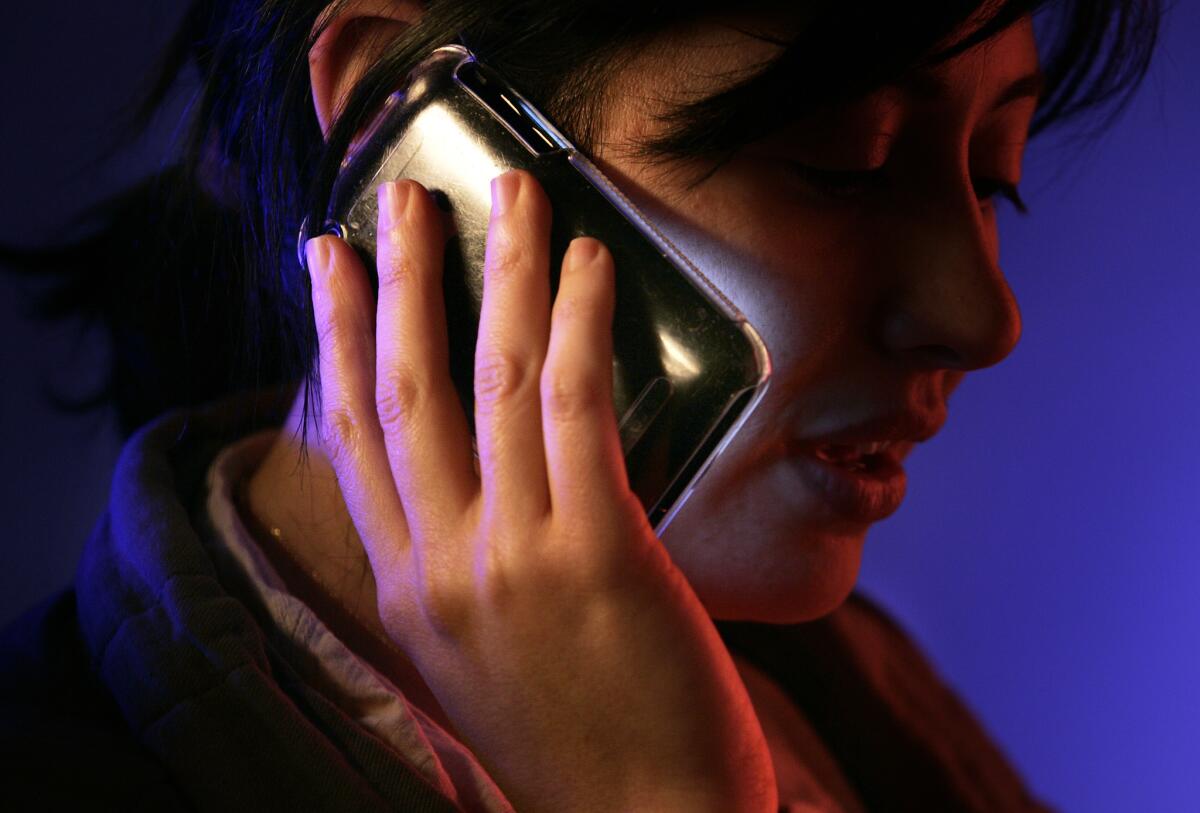Health experts question federal study linking cellphones to brain tumors

New results from a closely watched government study show why the World Health Organization has flagged mobile phones as a possible source of cancer, but they don’t make a strong case that the devices actually cause cancer in people, according to experts who have reviewed the findings.
Researchers from the U.S. National Toxicology Program have spent years subjecting hundreds of animals to the kinds of radiation emitted by mobile phones to see whether that exposure makes them more susceptible to brain tumors or other health problems. A preliminary report released Friday suggests the radiation may have made male rats more likely to develop tumors in the heart and possibly the brain.
Alongside these findings, the researchers published feedback from experts who were not involved in the study. Several of them found significant shortcomings that they said called into question the strength of any link between radiation exposure and tumor growth.
“I am unable to accept the authors’ conclusions,” wrote Dr. Michael S. Lauer of the National Institutes of Health, a reviewer who conducted his own analysis of the data.
See the most-read stories in Science this hour »
Scientists with the National Toxicology Program tested the potential dangers of two types of radiation emitted by mobile phones: GSM (short for global system for mobile communications), which is used by AT&T and T-Mobile; and CDMA (code division multiple access), used by Verizon Wireless and Sprint.
The rats were exposed to either GSM or CDMA radiation beginning in utero, just five days after they were conceived. Exposure continued for two years after birth, if the rats lived that long.
The rats were clustered into groups of 90, with each group exposed to a different type and strength of radiation. The GSM or CMA radiation cycled on and off in 10-minute intervals for 18 hours a day, providing a total of nine hours of daily exposure. Male and female rats were tested separately.
In addition, control groups of male and female rats were kept in similar cages but not subjected to mobile phone radiation.
The researchers focused on two kinds of tumors: malignant gliomas, which arise in glial cells in the brain, and schwannomas in the heart, which begin in so-called Schwann cells.
Among female rats, the risk of a tumor was the same regardless of the type or strength of radiation exposure. Even females subjected to the strongest radiation fields were no more likely to develop gliomas or schwannomas than their counterparts in the control group, according to the report.
However, among a group of 90 males exposed to the strongest levels of CDMA radiation, six developed schwannomas of the heart. For the sake of comparison, there were no schwannomas among males in the control group. This was the only such difference that was too large to be considered a coincidence, the researchers wrote.
Other data suggested that mobile phone radiation might fuel tumors in the brains and hearts of male rats, but the results were not as clear.
The WHO’s International Agency for Research on Cancer determined in 2011 that radiation from wireless phones is “possibly carcinogenic to humans.” Even a very small increase in tumor risk “could have broad implications for public health” because so many people use mobile devices, the researchers wrote.
Other experts agreed that even a tiny risk could make a big difference. But they listed several reasons why they did not find the study results entirely convincing.
For instance, several raised questions about subjecting rats to radiation for nine hours a day every day from before birth until “old age,” as Dr. Diana C. Haines, a pathologist at the National Cancer Institute, put it in her review. That amount of radiation may not be analogous to “actual human exposure,” she wrote.
Join the conversation on Facebook >>
Others noted that 72% of the rats in the control group died over the course of the study. In other recent studies by the National Toxicology Program, only 53% of rats in control groups died, according to Dr. R. Mark Simpson, a veterinary pathologist at the National Cancer Institute.
If the rats in the control group had lived longer, they probably would have developed more tumors. If so, the number of tumors in exposed and unexposed rats would have been even more comparable, Simpson wrote.
Lauer added that the fact that radiation-exposed rats lived longer than the control rats “leaves me even more skeptical of the authors’ claims.”
Other independent experts who reviewed the study on Friday echoed some of these concerns.
“I’m not going to stop using my mobile phone in the light of this,” said Kevin McConway, an emeritus professor of applied statistics at the Open University in England.
McConway, an expert on the use of statistics in biological and medical research, said that since the tumors examined in the study are relatively rare, it would take more than 90 rats in each group to see whether radiation exposure made tumors more likely.
He also questioned whether the conditions imposed on the rats could be meaningfully translated to people. The animals “were subjected to radiofrequency radiation for nine hours a day, every day for their whole lives, starting before birth,” he said. “That’s way more use than most people make of their phones.”
The study authors said they expect to have a more complete version of their report ready for peer review and public comment by the end of next year.
Follow me on Twitter @LATkarenkaplan and “like” Los Angeles Times Science & Health on Facebook.
MORE IN SCIENCE
1.2 million college students drink alcohol on a typical day, and more than 703,000 use weed
Climate change is happening on Mars, where an ice age is coming to an end
New method for predicting breast cancer risk suggests about 30% of cases could be prevented
UPDATES:
This story has been updated with more details about the study and additional comments from other experts.
The story was originally published at 9:38 a.m.







